How to use a top loading washing machine?
 Fans of front-loading machines will find it difficult to use a top-loading washing machine at first. There won’t be any particular problems - the controls here are intuitive and the washing principle is no different from front-facing ones. But you will have to come to terms with and get used to some of the features of “verticals”. We suggest you understand the difference between top-loading machines and how to use them correctly. We will also consider the pros and cons of verticals.
Fans of front-loading machines will find it difficult to use a top-loading washing machine at first. There won’t be any particular problems - the controls here are intuitive and the washing principle is no different from front-facing ones. But you will have to come to terms with and get used to some of the features of “verticals”. We suggest you understand the difference between top-loading machines and how to use them correctly. We will also consider the pros and cons of verticals.
Washing start algorithm
To wash clothes in a vertical washing machine, you need to go through the standard washing steps. Open the drum, load things, add detergent, lock the hatch and start the cycle. But everything is done differently than on the front camera, due to the unique design of the machine.
Differences with the front camera are noticeable as soon as you lift the top cover. Here the drum is not open, but “hidden” behind the doors. To load things into the cylinder, you must first release the special lock and open the doors.
The second point concerns the rotation of the drum. On vertical machines, you cannot manually rotate the cylinder, especially with force. Due to excessive pressure, the container will break off the stopper, turn over with the hole down and the open flaps will catch on the internal elements of the washer. To correct the situation, you will have to call a technician and disassemble the unit.
The rules for loading laundry are familiar to all users of the machine:
- sort laundry by fabric type and color;
- focus on machine loading standards;
- check the pockets of things;
- fasten zippers and buttons;
- Place delicate and decorated items in protective bags.

Next, you need to close the drum: close the flaps until they click and make sure that the latch fits into the provided groove. It is better to make sure that the “clutch” is reliable several times. It is prohibited to start the machine with an open cylinder - it is dangerous!
On vertical washing machines, the powder receptacle is built into the top cover of the housing!
The next step is adding detergent. On vertical units, the powder dispenser looks different: it is larger and built into the top cover. The product is poured strictly according to the instructions:
- The large middle compartment holds detergent for the main wash;
- powder is added to the compartment on the left marked “I” when soaking laundry;
- conditioner or other liquid additional product is poured into the cuvette on the right.
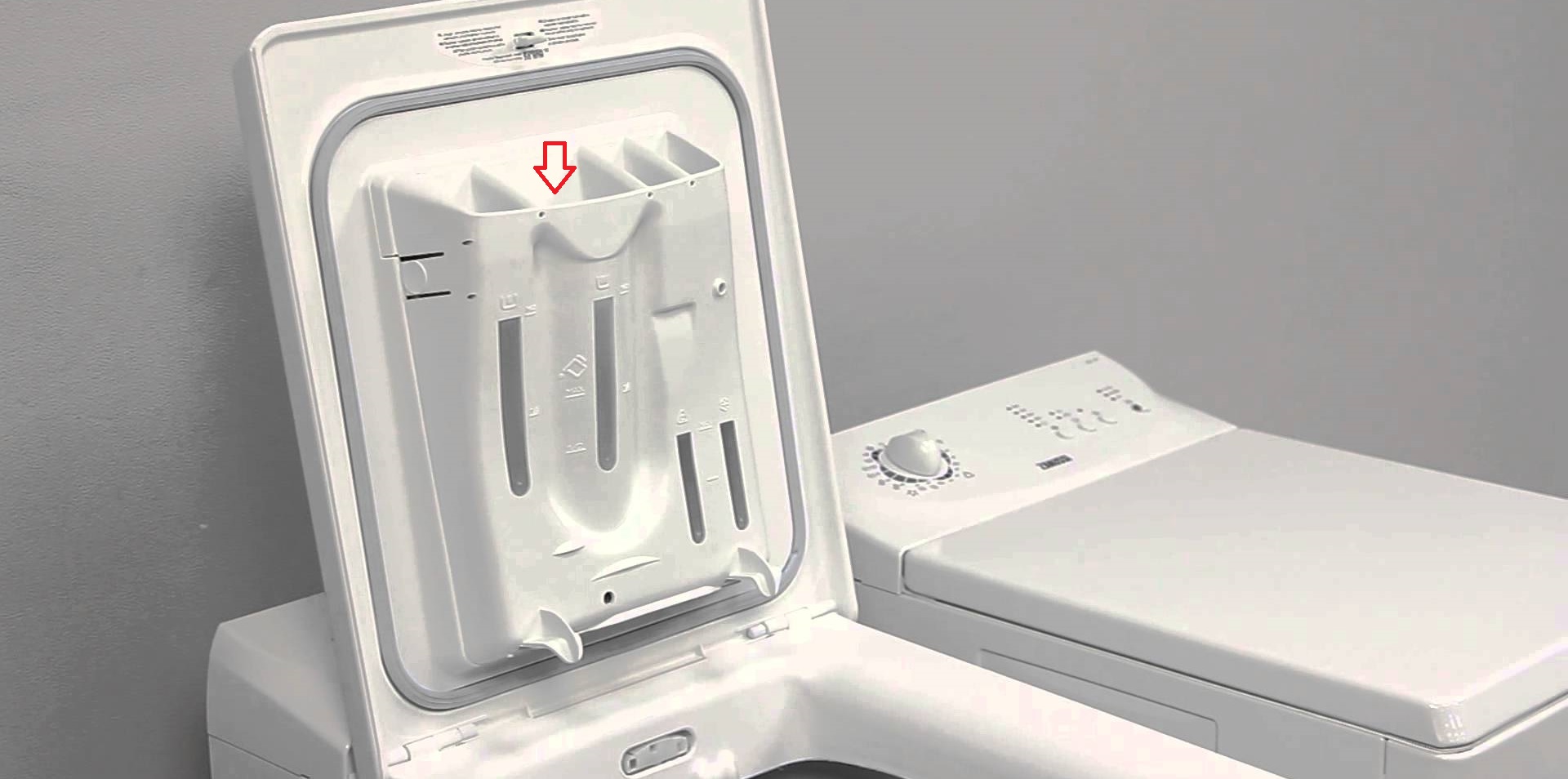
After filling the powder receptacle, the lid closes. Now you can connect the machine to the power supply and open the water supply tap. Next, press the power button, and the programmer selects the appropriate washing mode. If problems arise with selecting a program, it is better to read their description in the machine’s instructions. If necessary, factory settings are adjusted and additional options are activated.
The machine prepared for washing can be started. Just press the “Start/Stop” button and wait for the water to be drawn. If there is no start button on the dashboard, the cycle will begin automatically after selecting a program.
Positive and negative sides of verticals
You quickly get used to the operating features of vertical washing machines - after 3-5 washes everything is done automatically. Also, over time, you begin to appreciate the advantages of such technology. Top-loading washing machines differ from front-loading washing machines in a number of impressive “advantages”. Let's look at a few of them.
- Compactness. The width and depth of the vertical camera is smaller than that of the front camera. Due to its miniature size, such equipment can easily be placed in small bathrooms. It is also convenient that there is no need to provide free access to the front wall - here the drum opens from above.
- Aesthetics. Compact models are practically invisible in the interior, as they do not attract unnecessary attention.
- Capacity. Vertical machines can hold more laundry than a front-facing machine of the same size.

- Silence. Top-loading machines weigh less, so they wash as quietly as possible. The vertical design has an effect on reducing vibration and noise: it is more stable and better absorbs the resulting centrifugal force.
- Possibility of reloading laundry. Here the cycle can be stopped at any time: just stop the program and lift the top cover. When opening the hatch, there is no need to wait for the water to drain - it remains in the tank. The user only has to put the items in the cylinder and continue washing.
- Convenience. Loading the drum vertically is easier and more comfortable: there is no need to bend over and squat too much.
- Fast diagnostics. To assess the condition of the hatch cuff or drum, just look down.
- Safety. The instrument panel on this type of equipment is located on top. Small children may have difficulty reaching the buttons. The likelihood of accidentally touching the programmer and keys is also reduced.
- Reliability. Vertical machines are resistant to imbalance. Even if the drum is unbalanced, the damage is minimal: the bearings firmly “hold” the cylinder and prevent it from deforming.
Vertical washing machines also have their disadvantages. First of all, this concerns the price - the cost of top-loading machines is higher than that of front-loading machines. The difference often reaches 20-30%. If you save money and take a budget model, you may be left without the useful “drum parking” option. If equipped, the tank automatically stops with the flaps facing up - for more convenient and safe loading of laundry. Without it, you will have to turn the cylinder manually.
Vertical washing machines with the “Drum Parking” function turn the tub with the flaps up at the end of the cycle for convenient unloading of laundry.
The disadvantages include the limited “use” of technology. The vertical stand cannot be built into a kitchen set or any objects can be placed on its top cover. However, the last drawback is controversial - manufacturers do not recommend installing anything on washing machines, regardless of the type of load.
Interesting:
Reader comments
- Share your opinion - leave a comment

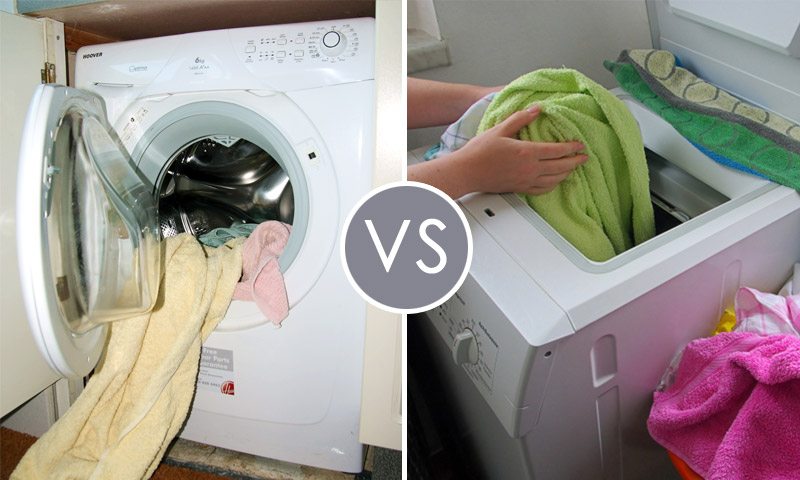
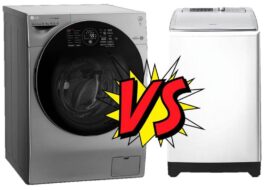
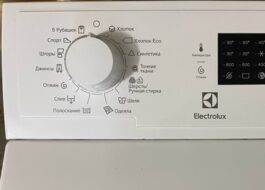
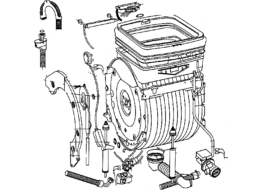
















Add a comment